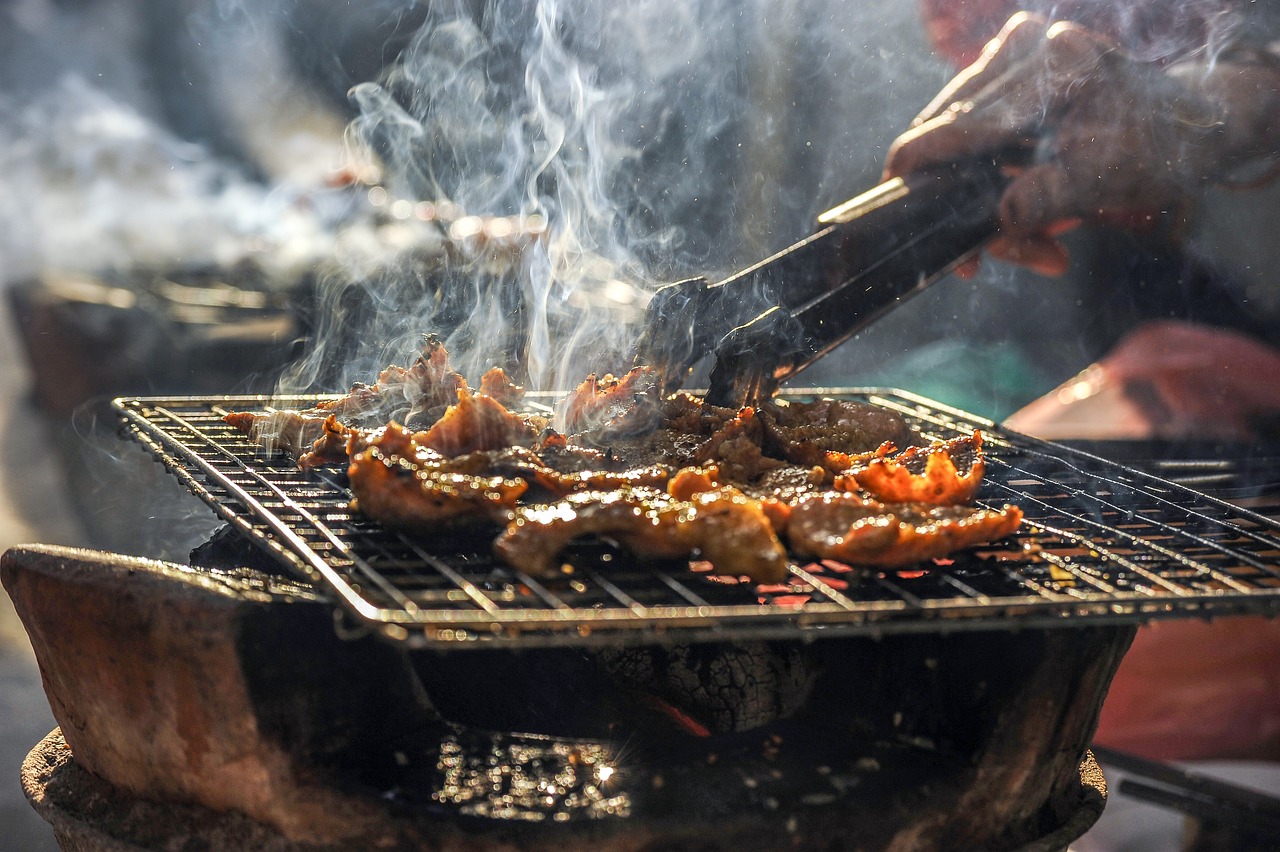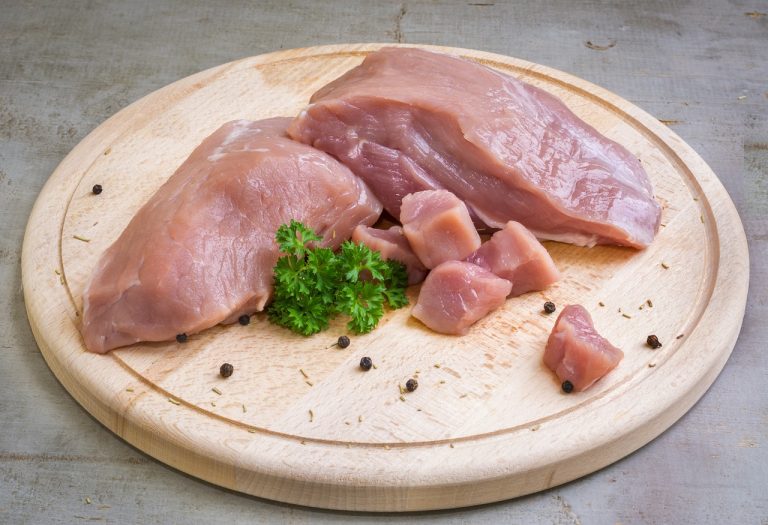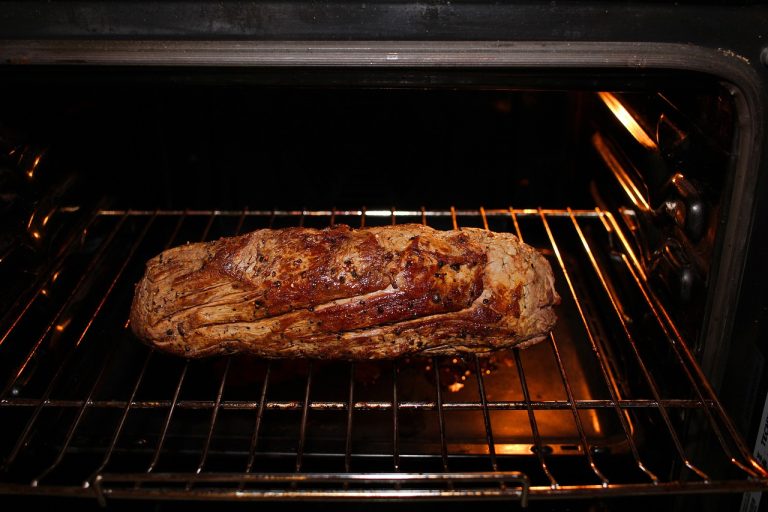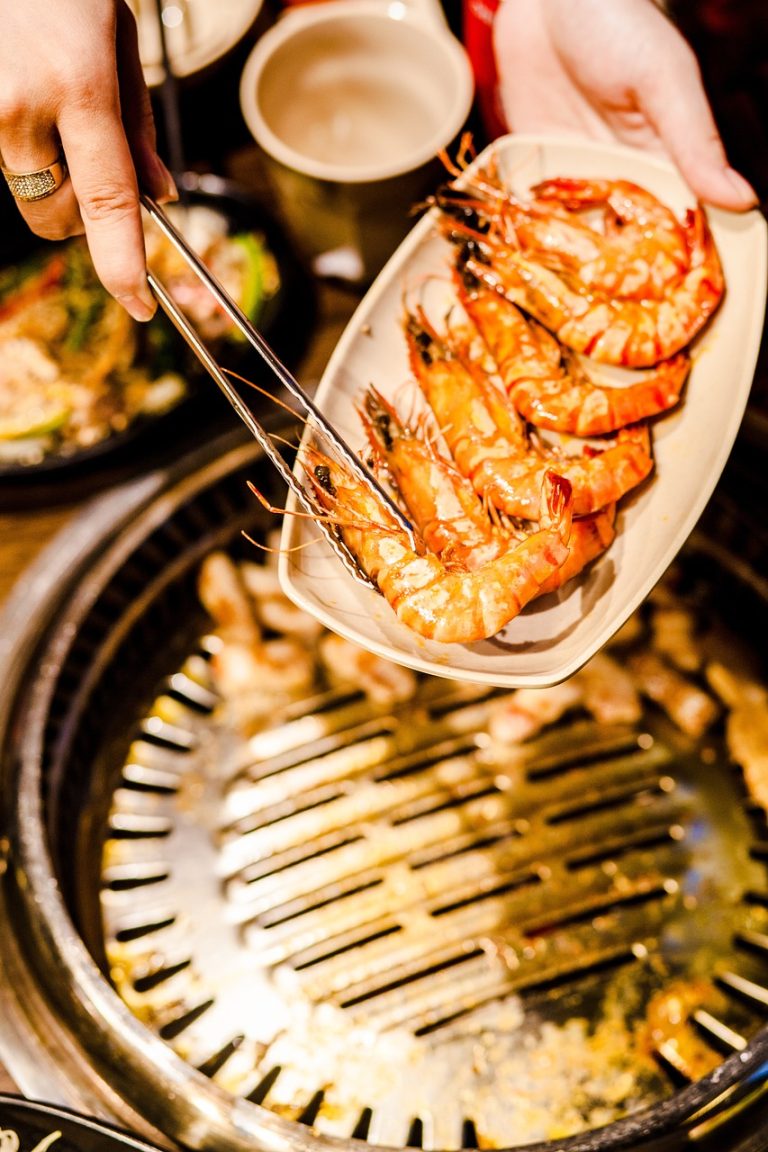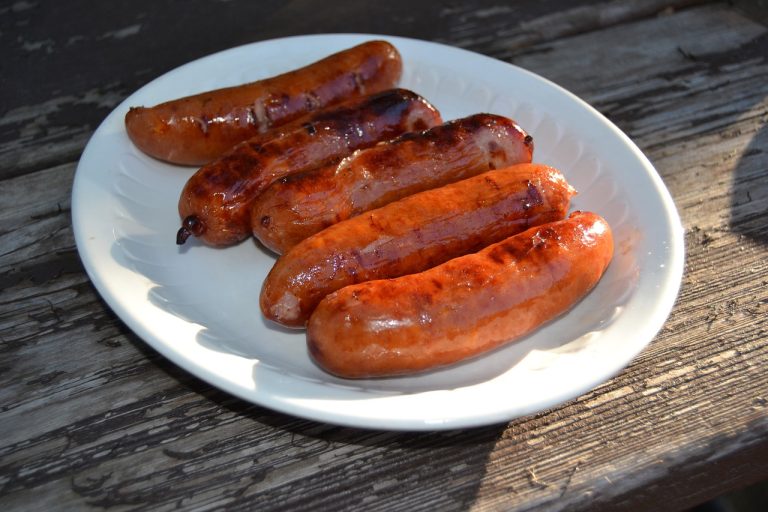HOW TO KEEP A SMOKER GOING OVERNIGHT (6 useful tips)
Imagine the alluring aroma of perfectly smoked meats wafting through the crisp night air, tantalizing your senses as you dream of the mouthwatering feast to come. Keeping a smoker going overnight is the key to transforming ordinary cuts of meat into smoky, succulent masterpieces that will have your taste buds dancing with delight.
While it might sound like a culinary adventure reserved for the boldest pitmasters, fear not! In this guide, we’ll unveil the secrets to taming the fire, mastering the art of smoke, and ensuring that your smoker never rests, delivering a night-long symphony of flavor that will leave your guests in awe and your cravings forever satisfied.
Get ready to embark on a journey into the heart of the BBQ night, where the flames flicker, and the flavors flourish, as we unveil the secrets of how to keep a smoker going overnight.
HOW TO KEEP A SMOKER GOING OVERNIGHT?
Keeping a smoker going overnight is essential for low and slow barbecue enthusiasts. To maintain the ideal temperature and ensure a flavorful result, follow these steps. Firstly, choose quality charcoal or hardwood, as it burns longer and imparts a rich smoky flavor. Next, create a steady airflow by adjusting the smoker’s vents and dampers, allowing for consistent heat.
Additionally, a water pan can help regulate temperature and keep the meat moist. Don’t forget to check the fuel level periodically and add more as needed, using a chimney starter for safety. Finally, invest in a reliable thermometer to monitor your smoker remotely, ensuring a successful overnight smoke. By mastering these techniques, you can enjoy mouthwatering, perfectly smoked meats without constant monitoring.
CHOOSING THE RIGHT SMOKER
Choosing the right smoker is indeed a crucial step in the smoking process, as it can significantly impact the flavor, cooking time, and overall ease of the smoking experience. Here’s a brief overview of the three types of smokers mentioned—offset smokers, bullet smokers, and electric smokers—and some factors to consider when selecting the one that suits your needs:
OFFSET SMOKERS:
ADVANTAGES:
Offset smokers are popular among experienced barbecue enthusiasts for their ability to impart a rich smoky flavor to meats. They offer a large cooking chamber and a separate firebox, which allows for indirect heat and smoke control.
CONSIDERATIONS:
Offset smokers can be more challenging to use for beginners due to temperature management requirements. You’ll need to tend to the fire and maintain a consistent temperature throughout the cooking process. They are often larger and less portable than other options.
BULLET SMOKERS:
ADVANTAGES:
Bullet smokers are known for their ease of use and excellent temperature control. They have a smaller footprint, making them suitable for smaller spaces. They are also more affordable and great for beginners.
CONSIDERATIONS:
While bullet smokers are user-friendly, they may not provide as strong a smoky flavor as offset smokers. However, you can still achieve delicious results with proper technique.
ELECTRIC SMOKERS:
ADVANTAGES:
Electric smokers are incredibly convenient and require minimal effort to operate. They offer precise temperature control and are often more suitable for people with less smoking experience.
CONSIDERATIONS:
Some enthusiasts argue that electric smokers may not produce the same depth of smoky flavor as traditional wood or charcoal smokers. They may also lack the authenticity of tending to a real fire.
FUEL SELECTION AND PREPARATION
Selecting and preparing the right fuel for overnight smoking is indeed crucial for achieving great results. Here’s a breakdown of the steps and considerations:
FUEL CHOICE:
HARDWOOD CHARCOAL:
Hardwood charcoal is an excellent choice because it burns consistently and provides a clean heat source with minimal ash production. It also imparts a pleasant smoky flavor to your meat.
WOOD CHUNKS:
Adding wood chunks to your charcoal is essential for producing that classic smoky flavor. Different types of wood, like hickory, applewood, mesquite, or oak, can give your meat distinct flavors. Experiment to find your favorite wood-smoke combination.
AVOID LIGHTER FLUID-SOAKED BRIQUETTES:
Lighter fluid-soaked briquettes should be avoided as they can introduce unwanted chemical flavors into your food. Instead, opt for natural lump charcoal or briquettes without added chemicals.
PREHEATING YOUR SMOKER:
Preheat your smoker before placing your meat inside. This ensures a stable cooking temperature from the beginning, reducing fluctuations that can affect the quality of your smoked food.
MAINTAIN TEMPERATURE:
One of the challenges of overnight smoking is maintaining a consistent temperature. Use a good quality smoker with precise temperature control features, or use a separate thermometer to monitor the temperature inside the smoker.
FUEL MANAGEMENT:
Have extra fuel (charcoal and wood chunks) readily available, as you’ll likely need to replenish it during the night. Be prepared to add more fuel to maintain the desired temperature.
MINIMIZE OPENINGS:
Limit the number of times you open the smoker during the night to check on your meat. Each time you open the smoker, you release heat and smoke, which can extend the cooking time.
WATER PAN:
Consider using a water pan in your smoker. This can help regulate temperature and maintain moisture, preventing your meat from drying out during the long smoking process.
VENT CONTROL:
Adjust the vents on your smoker to control airflow and temperature. More airflow will increase the temperature, while less airflow will decrease it.
SAFETY PRECAUTIONS:
When smoking overnight, safety is paramount. Ensure that your smoker is placed in a safe location away from flammable materials, and have a fire extinguisher on hand, just in case.
MONITORING TOOLS:
Invest in a reliable digital meat thermometer to monitor the internal temperature of your meat. This allows you to know when your meat is done without opening the smoker frequently.
FIRE MANAGEMENT
You’ve provided some excellent tips for fire management during overnight smoking. Here’s a breakdown of the key points you’ve mentioned:
CHIMNEY STARTER:
A chimney starter is a great tool to light charcoal quickly and efficiently. It helps you avoid using lighter fluid, which can leave unwanted flavors on your food. Fill the chimney starter with charcoal and light it from the bottom. Once the coals are ashed over and glowing, carefully pour them into your smoker’s firebox.
PRE-SOAKED WOOD CHUNKS:
Adding wood chunks to your charcoal is essential for generating the smoky flavor that’s characteristic of barbecue. Soaking the wood chunks beforehand can help them smolder and produce a steady smoke, rather than catching fire and burning too quickly.
SMALL, CONTROLLED FIRE:
It’s crucial to start with a small, controlled fire to establish the right temperature inside your smoker. This is often called the “minion method” or “snake method,” where you arrange charcoal around the perimeter of the firebox and light a small portion. This allows the fire to slowly spread, maintaining a consistent temperature over an extended period.
TEMPERATURE MONITORING:
Use a reliable thermometer to keep a close eye on the temperature inside your smoker. This will help you make real-time adjustments to maintain the desired temperature. The temperature you’re aiming for will depend on the type of meat you’re smoking, but low and slow cooking is generally done at temperatures between 225°F (107°C) and 250°F (121°C).
VENTS AND DAMPERS:
Most smokers have vents and dampers that you can adjust to control airflow. More airflow will increase the fire’s intensity, while less airflow will decrease it. Use these adjustments in conjunction with your thermometer readings to fine-tune the temperature inside the smoker.
LOW AND SLOW:
As you’ve rightly pointed out, the key to successful overnight smoking is a “low and slow” approach. This slow cooking method allows the meat to become tender and infused with smoky flavors. It’s especially important for cuts like brisket and pork shoulder, which benefit from long cooking times at low temperatures.
FOOD PREPARATION AND TIMING
You’ve provided some excellent tips for food preparation and timing when using a smoker. Here’s a bit more detail on each of these points:
SEASONING:
Seasoning your meat is essential to enhance its flavor. You can use a variety of rubs, marinades, or brines to add flavor to your meat. Make sure to apply the seasoning evenly and allow it to sit on the meat for some time to penetrate and enhance the flavor. The exact timing for seasoning can vary depending on the type of meat and your recipe, but typically, letting it sit for 30 minutes to a few hours in the refrigerator works well.
ROOM TEMPERATURE:
Allowing your meat to come to room temperature before smoking is a crucial step. This ensures more even cooking throughout the meat. Depending on the size and thickness of the meat, it may take 30 minutes to 2 hours to reach room temperature. Just be cautious about leaving meat out for too long, especially in warmer weather, to avoid food safety issues.
COOKING TIME:
Calculating the cooking time is essential for smoking success. This involves considering the weight and type of meat, as well as the smoking temperature. Low and slow smoking is a common method, with temperatures typically ranging from 225°F to 275°F (107°C to 135°C). For large cuts of meat like brisket or pork shoulder, you can estimate roughly 1 to 1.5 hours of cooking time per pound (2 to 2.5 hours per kilogram). However, this can vary, so it’s crucial to use a meat thermometer to determine doneness accurately.
STARTING EARLY:
Starting the smoking process well in advance is a wise approach. It’s better to have your food ready ahead of time and keep it warm if needed than to rush the smoking process and potentially end up with undercooked or tough meat. Smoking times can vary, so starting early ensures you have a buffer.
MEAT THERMOMETER:
A reliable meat thermometer is your best friend when smoking meat. It helps you monitor the internal temperature of the meat, allowing you to cook it to the desired level of doneness. Different meats have different target temperatures, so refer to specific temperature guidelines for the type of meat you’re smoking. Common temperatures include 165°F (74°C) for poultry, 145°F (63°C) for pork, and 195°F to 205°F (90°C to 96°C) for brisket.
MONITORING AND ADJUSTING
Monitoring and adjusting are critical aspects of successful smoking, whether you’re smoking meats or other foods. Here’s a more detailed breakdown of how to effectively monitor and adjust your smoker:
TEMPERATURE CONTROL:
Your smoker’s temperature is the most crucial factor in achieving the desired results. You’ll need to monitor it closely throughout the smoking process.
Use a reliable thermometer to measure both the smoker’s internal temperature and the temperature at the cooking grate level.
Adjust the air vents or dampers on your smoker to regulate the airflow, which in turn controls the temperature. More air means higher temperature, while less air means lower temperature.
Keep in mind that different types of wood or charcoal can burn at different rates, so you may need to adjust the fuel source to maintain your desired temperature.
FUEL MANAGEMENT:
Depending on your smoker type (charcoal, wood, electric, etc.), you’ll need to manage the fuel source.
Add charcoal, wood chunks, or wood chips as needed to maintain a steady temperature. Remember that adding cold fuel can cause a temporary temperature drop, so plan for this and make adjustments accordingly.
If you’re using a wood smoker, maintaining a bed of hot coals is essential. Add wood chunks or chips as necessary to keep the smoke going.
For electric smokers, ensure a consistent power supply and monitor the smoker’s digital controls for any fluctuations.
SMOKE PRODUCTION:
Smoking is not just about heat but also about imparting flavor through the smoke. Keep an eye on the smoke output.
Thin, wispy blue smoke is ideal. If you see thick, white smoke, it can make your food taste bitter.
Adjust the fuel, airflow, and the type of wood you’re using to achieve the desired smoke quality.
TECHNOLOGY AIDS:
Take advantage of modern smoker technology if your smoker is equipped with Bluetooth thermometers or Wi-Fi connectivity.
These tools can allow you to monitor temperature and other cooking parameters remotely, making it more convenient to maintain control, especially during long smoking sessions or overnight cooks.
RECORD KEEPING:
Keep a log or note of the adjustments you make throughout the smoking process. This can help you refine your technique for future smokes.
PATIENCE AND CONSISTENCY:
Remember that maintaining a consistent cooking environment is key to producing great smoked food. Small, gradual adjustments are often more effective than major, abrupt changes.
Be patient and give your smoker time to respond to adjustments before making more changes.
SAFETY PRECAUTIONS
Absolutely, safety is paramount when using a smoker, especially when leaving it unattended overnight. Here are some key safety precautions to follow:
LOCATION:
Choose a safe location for your smoker. It should be placed in an open, well-ventilated area, away from any flammable materials such as leaves, dry grass, or overhanging branches. Maintain a safe distance from your home, wooden structures, and other combustible items.
FIREPROOF SURFACE:
Place your smoker on a non-combustible, fireproof surface like a concrete patio or metal sheet. This helps prevent accidental fires from spreading.
FIRE EXTINGUISHER:
Always have a working fire extinguisher nearby. Make sure you and others in your household know how to use it. Fire extinguishers designed for both grease fires and general fires are ideal.
WATER SOURCE:
Keep a hose or a bucket of water nearby to quickly extinguish any flare-ups or embers that may escape from the smoker.
FUEL MANAGEMENT:
If you’re using charcoal or wood chips, be cautious with fuel. Don’t overfill the smoker, and use a chimney starter or electric starter for charcoal to avoid flare-ups.
TEMPERATURE CONTROL:
Maintain proper temperature control by regularly monitoring your smoker. Invest in a good quality thermometer to ensure the temperature stays within the desired range.
UNATTENDED SMOKING:
While it’s generally not recommended to leave a smoker unattended, if you must do so, take extra precautions. Ensure the smoker is set up for a long, slow cook, and that all vents and dampers are properly adjusted to maintain a stable temperature. Even then, check on it periodically.
TIMER AND ALARMS:
Use timers and alarms to remind you to check on the smoker. Many modern smokers and thermometers have built-in alarms for this purpose.
KEEP CHILDREN AND PETS AWAY:
Make sure children and pets are kept away from the smoker area while it’s in use. The smoker can become extremely hot, and the potential for accidents is high.
PROPER SHUTDOWN:
When you’re finished smoking, shut down the smoker properly. Close all vents and dampers to extinguish any remaining coals or embers. Allow the smoker to cool down completely before storing it.
Frequently Asked Questions (FAQ) about “How to Keep a Smoker Going Overnight”:
What is the benefit of keeping a smoker going overnight?
Keeping a smoker going overnight allows you to slow-cook meats, infusing them with rich smoky flavor and tenderness, without the need for constant monitoring. It’s perfect for long smoking sessions or when you want to wake up to a delicious barbecue feast.
What type of smoker works best for overnight smoking?
Offset smokers and pellet smokers are ideal for overnight smoking. They offer consistent temperature control and have large fuel capacities, making it easier to maintain the fire throughout the night.
How can I ensure a steady temperature in my smoker overnight?
To maintain a steady temperature, use high-quality charcoal or wood pellets, and set up your smoker with a reliable temperature controller. Preheat your smoker, adjust the vents, and periodically check the temperature to make adjustments as needed.
Do I need to wrap my meat when smoking overnight?
Wrapping your meat in foil or butcher paper, known as the “Texas crutch,” can help speed up the cooking process and retain moisture. However, it’s not mandatory. Some prefer the “bark” that forms on unwrapped meat.
Can I use an electric smoker for overnight smoking?
Yes, electric smokers are suitable for overnight smoking. They offer precise temperature control and are designed for longer cooks. Just ensure you have a reliable power source or backup plan in case of outages.
How often should I add wood or charcoal during an overnight smoke?
The frequency of adding fuel depends on your smoker’s design and size, but generally, you may need to replenish every 4-6 hours. Use a chimney starter to preheat charcoal or pellets before adding them to maintain temperature stability.
Is it safe to leave a smoker unattended overnight?
While it’s possible to smoke overnight, safety should be a top priority. Make sure your smoker is in a safe location, away from flammable materials, and use temperature alarms or monitors to alert you of any issues while you sleep.
How can I prevent my smoker from running out of fuel during the night?
Plan ahead by estimating the amount of fuel you’ll need based on your smoker’s capacity and the expected cook time. Always have extra fuel on hand, and consider using a larger charcoal basket or hopper if your smoker allows.
What meats are best for overnight smoking?
Meats that benefit from long, slow cooking, like brisket, pork shoulder, and ribs, are excellent choices for overnight smoking. These cuts become tender and flavorful when exposed to extended smoke.
Can I prepare sides or other dishes in my smoker while overnight smoking meat?
Yes, you can utilize the space in your smoker to cook side dishes like baked beans, potatoes, or even desserts like smoked cobbler. Just be mindful of cooking times and temperature requirements for each item.
CONCLUSION
Keeping a smoker going overnight is a skill that requires careful planning, attention to detail, and a deep love for the art of smoking. Whether you’re preparing a delicious brisket, ribs, or any other smoked delicacy, it’s crucial to maintain a steady temperature, monitor the fuel source, and ensure proper ventilation throughout the night. While it may seem daunting at first, with practice and the right equipment, anyone can successfully keep a smoker going overnight. The result is well worth the effort: mouthwatering, tender, and flavorful smoked meats that will impress family and friends alike. So, remember to be patient, stay vigilant, and enjoy the satisfaction of mastering the art of overnight smoking.

